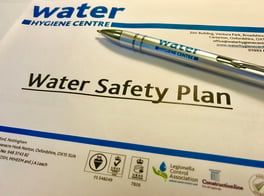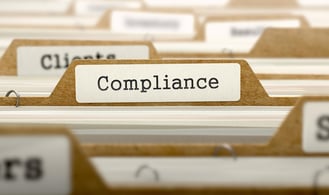
The primary responsibility of a commercial real estate company is to support and assist landlords with the rental of their properties. This includes marketing and leasing, rent collection, maintenance and ongoing general support.
Real estate can be split into four broad categories - Residential, Commercial, Industrial and Land. Real estate agents assist businesses, investors and homeowners buy and sell all four types of properties.
Cases of Legionnaires’ disease in the UK have continued to increase in recent years and commercial real estate owners face potential exposure and liability. Legionella cases often result in costly and complex claims of bodily injury and property damage, generating high remediation and restoration costs. Indeed, any person or organisation in control of the premises, or responsible for the water systems in said premises, have a legal duty to ensure that the risk of exposure of tenants to Legionella is properly assessed and controlled.
UK Law and guidance
Section 3(2) of the Health and Safety at Work etc Act 1974 (HSWA) makes provision for relevant health and safety legislation to apply to landlords (and their representatives), specifically to ensure a duty of care is shown to their tenants concerning their health and safety.
Additionally, the HSE’s HSG 274 Part 2 “Legionnaires’ disease The control of legionella bacteria in hot and cold water systems”, is also clear, in stating; ‘Where a managing (or letting) agent is used, the management contract should clearly specify who has responsibility for maintenance and safety checks, including managing the risk from legionella’. Where there is no contract or agreement in place or it does not specify who has responsibility, the duty is placed on whoever has control of the premises and the water system in it...’,
In rented property, therefore, it is the responsibility of the landlord, real estate company or letting agency, depending on the agreement; - both the landlord and real estate company may have equal responsibility and legal obligation. The responsible party/parties in all circumstances should ensure the following:
- They identify and assess sources of risk. i.e. undertake a Legionella risk assessment;

- Where appropriate, prepare a written scheme or water safety plan for preventing or controlling the risk;
- Implement, manage and monitor precautions – if control measures are to remain effective, regular monitoring of the systems and control measures is essential;
- Keep records of the precautions undertaken;
- Appoint a competent person with sufficient authority and knowledge of the installation to help take the measures needed to comply with the law
In their most simplistic form, these five steps are no less fundamental to an individual property or organisation’s safe operation today than when initially documented in earlier editions of ACoP L8.
ACoP L8 elaborates on these points whilst also detailing specifically the nature and makeup of a ‘Written Scheme’ or ‘Water Safety Plan’:
- For preventing or controlling the risk from exposure;
- Ensuring proper implementation and management;
- Specifying measures are undertaken to ensure that it remains effective.
Recently, BS8680:2020 “Water Quality – Water Safety Plans – Code of Practice” has been issued to provide unequivocal recommendations and guidance on the development of a Water Safety Plan [WSP]. The standard is intended to be used as a code of practice to demonstrate current good practice and compliance and real estate companies should now be looking to integrate the document’s evolutionary approach into their water compliance system.
Are all real estate properties at risk from Legionella though?
All man-made hot and cold water systems installed in properties are environments in which Legionella bacteria can grow. The features listed below make property especially susceptible to the bacteria;
- Water temperatures between 20°C and 45°C;
- Water systems that contain or have contact with debris and other organic matter, i.e. rust, scale, sludge, biofilm etc.
- Water systems that create aerosol/droplets of respirable size and to which occupants can be exposed.
- Properties that are left vacant for extended periods thereby creating water stagnation.
- Communal water systems which serve multiple properties.
- Older hot and cold water systems and those having an excessive amount of stored water.
What can be done to reduce Legionella risk?
The appointed competent, known as the ‘Responsible Person(s)’ for the properties should have the ability, experience, instruction, information, training and resources to implement precautionary measures to minimise potential risks. Whilst the Responsible Person may appoint a suitable contractor to aid with the completion of management or technical tasks, accountability cannot be delegated.
To reduce the risk from Legionella (using current HSE guidance) the following risk minimisation and good practice items should be considered;
- Have specifically appointed person[s] responsible for Legionella [water safety] control;
- Ensure the current Legionella risk assessment is available at the local level, understood by the appropriate staff and have a management plan in place to act on any findings;
- Ensure a logbook system is in place detailing the individual real estate’s communication pathway, planned preventative maintenance tasks undertaken and frequencies, records of work carried out, contingency measures and any other relevant information. Note: the logbook system should be appropriate to the site it concerns;

- Ensure all identified relevant person[s] have sufficient Legionella training and experience to be able to carry out the role competently, and other relevant staff are trained to be aware of the importance of their role in controlling Legionella;
- Keep hot water hot and circulating at all times: Greater than 50°C throughout the entire hot water system;
- Keep cold water cold at all times. It should be maintained at temperatures below 20°C throughout the system to all outlets [this may not be possible when the ambient temperature is high, but every effort should be made to ensure that cold water entering the premises and in storage remains as cold as possible];
- Safely run all outlets including showers in all areas for several minutes to draw through water (until it reaches the temperatures stated in points 5 and 6) at least weekly if rooms are unoccupied, and always before occupation;
- Keep shower heads/hoses, taps and other facilities dispensing water clean and free from scale;
- Clean, drain and if necessary, disinfect hot water generators on an annual basis;
- Clean and disinfect all water filters regularly, as directed by the manufacturer.
- Inspect water storage tanks and visible pipework routinely. Ensure that all coverings are intact and firmly in place, and disinfect with 50mg/l chlorine.
- Ensure any Thermostatic Mixing Valves (TMV’s) installed are suitably inspected and maintained on at least an annual basis;
- Identify any ‘other’ risk system via the current water risk assessment and ensure relevant PPM tasks are implemented;
- Ensure that when carrying out system modifications or new installations they do not create pipework with intermittent or no water flow, and disinfect the system following any work;

- Keep records of all water systems reading such as temperature, pH and chlorine concentrations and ensure they are checked regularly by the appropriate manager;
- Consider and undertake microbiological sampling to aid the demonstration of monitoring compliance and safe water systems.
- Inform tenants of the extent of their responsibilities in the day-to-day management of risk.
*The checklist above is not exhaustive and larger properties may require a significantly more detailed approach.
Real estate companies’ agents (contract or lease dependent) may well carry responsibility and legal obligation for the management of the risk from Legionnaires’ disease on behalf of their clients. It is imperative therefore that a robust plan for the management of the risk is in place. This will ensure that the risk of exposure to Legionella in their premises is both properly assessed and controlled continually.
If you have questions regarding the issues raised above or you would like to speak with one of our consultants regarding water hygiene, please click here to get in touch.
Editor’s Note: The information provided in this blog is correct at date of original publication – January 2022.
© Water Hygiene Centre 2022








